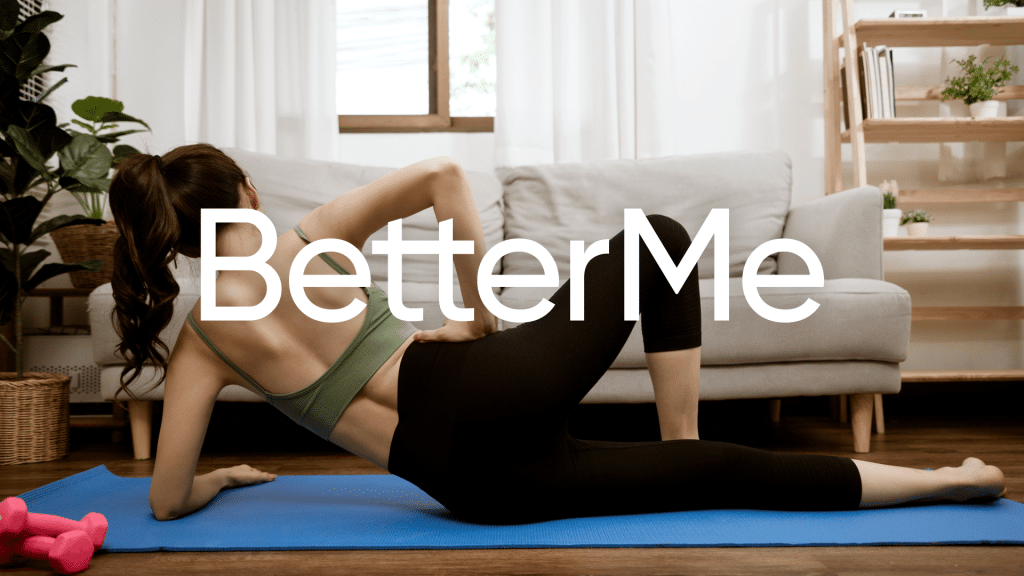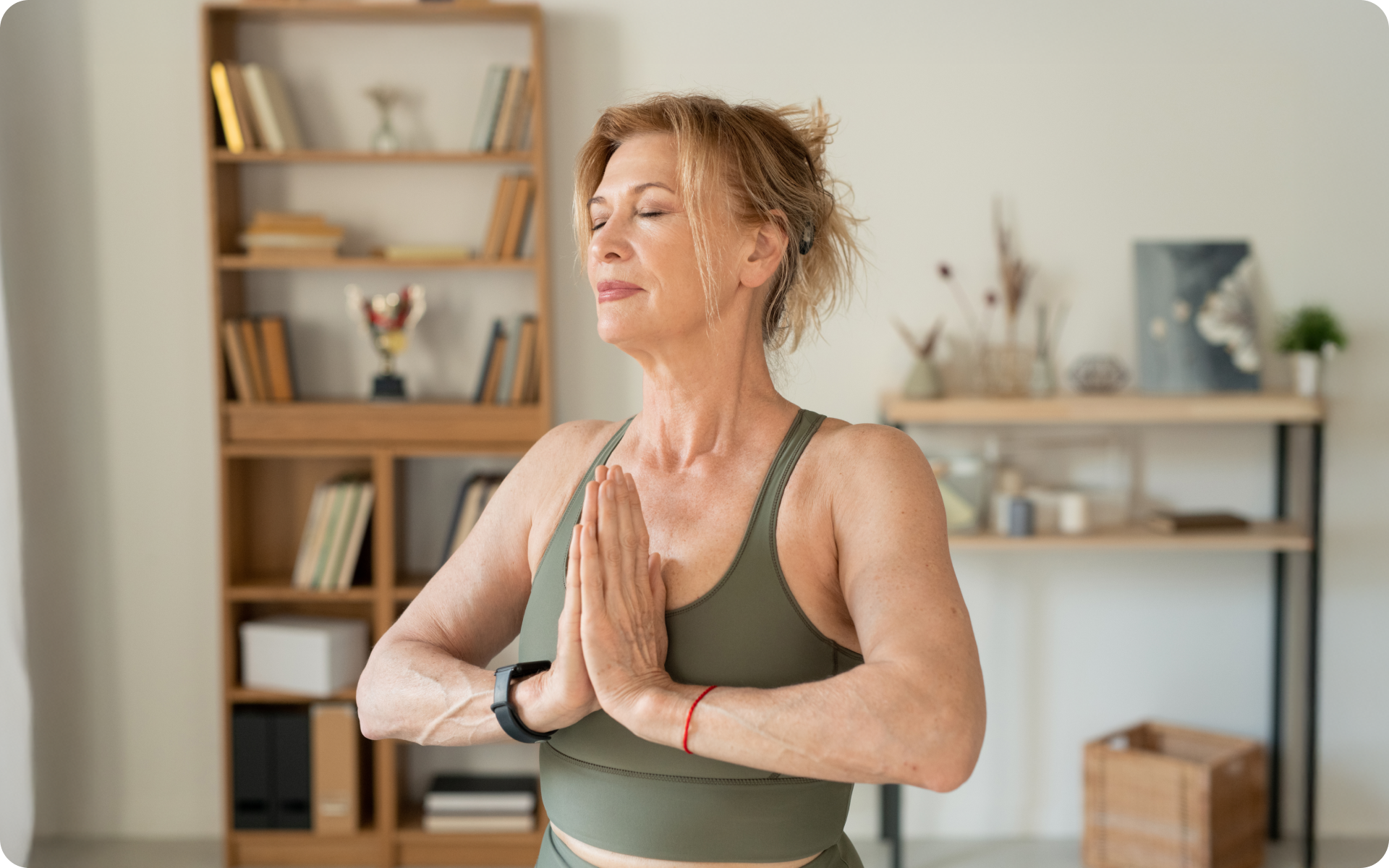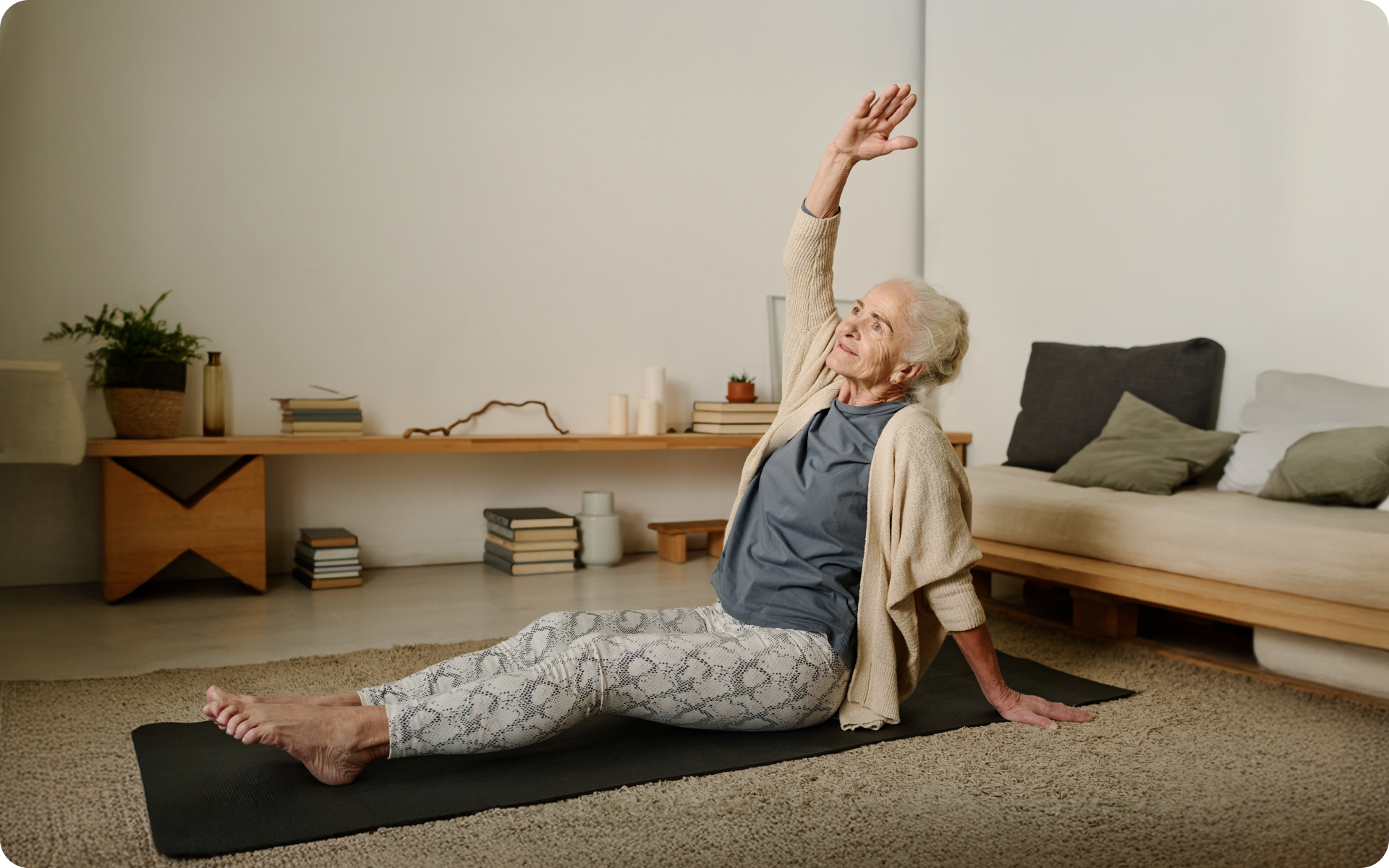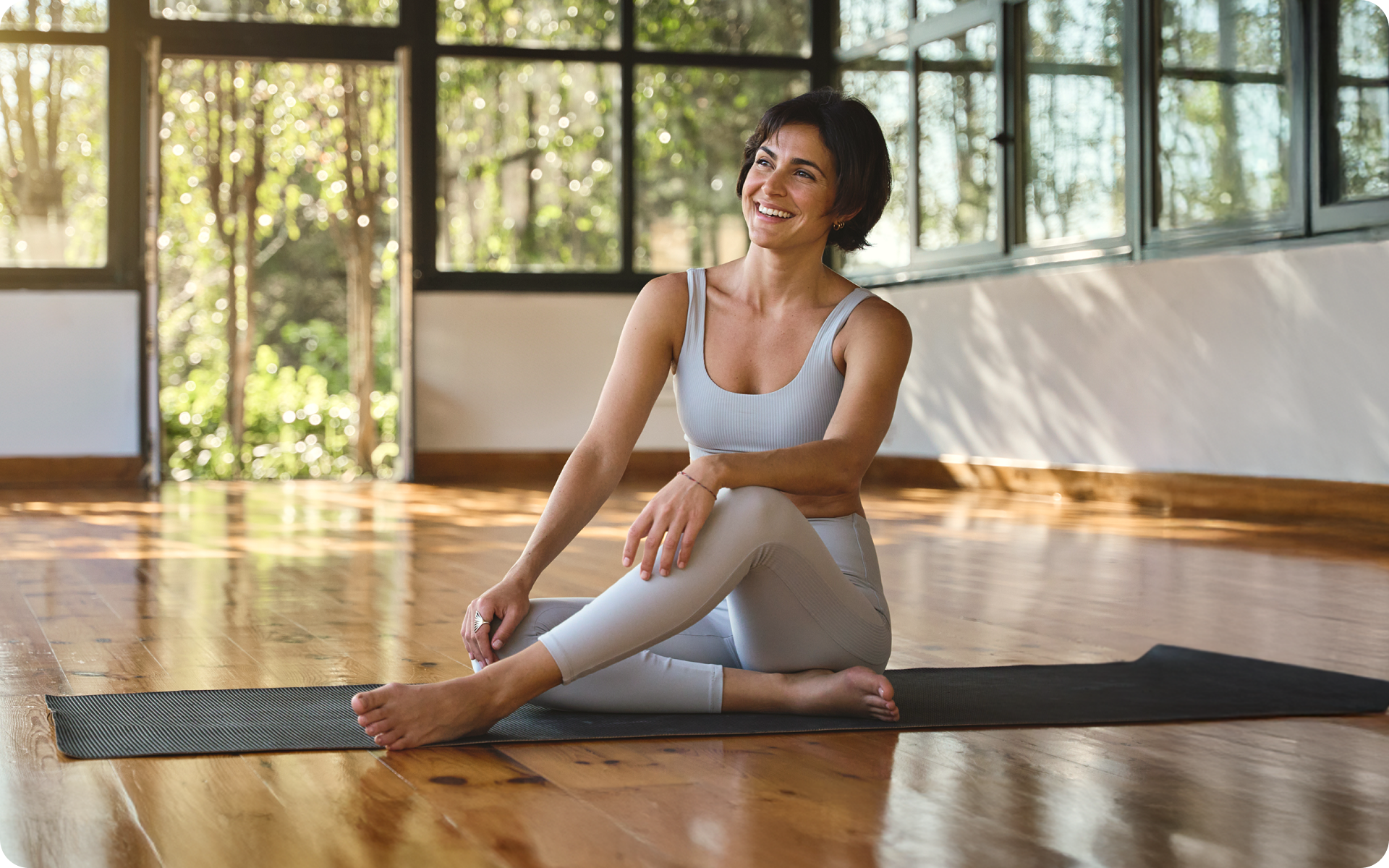In yoga, the root chakra is known as Muladhara. “Mul” means “root” and “adhara” means “support.” The root chakra is the foundation of the other six primary chakras in the body, so it’s important to keep it strong and balanced. The six, commonly known as Sapta chakras, are the Sahasrara (crown), Ajna (third eye), Vishuddha (throat), Anahata (heart), Manipura (solar plexus) and Svadhisthana (sacral) (1). Each of these chakras is associated with unique energies and can be balanced through specific yoga poses. The root chakra, Muladhara, is associated with the element of Earth and the color red. It’s located at the base of your spine, near your perineum, and it’s responsible for your sense of security, stability, and grounding. When this chakra is in balance, you feel safe and secure, and you’re able to stay connected to the present moment. When it’s out of balance, though, you may feel anxious, fearful, and disconnected from your body. By practicing the following root chakra yoga poses, you can begin to awaken and balance this energy center.
1. Mountain Pose (Tadasana)
This pose is a great way to ground yourself and connect with the energy of the earth.
- Begin standing with your feet together, and focus on drawing energy up from the soles of your feet, through your legs and up into your torso.
- Focus on lengthening the spine and drawing energy up from the tailbone.
- Take several deep breaths here before moving onto the next pose.
2. Warrior I (Virabhadrasana I)
This pose can help you to build confidence and connect with your inner strength.
- Begin standing with your feet hip-width apart, and then turn your right foot out to the side.
- Bend your right knee until it’s over your right ankle and keep your left leg straight.
- Extend your arms out to the sides and keep your shoulders relaxed.
- Take several deep breaths here before switching sides.
3. Corpse Pose (Savasana)
This pose can help you to relax and release any tension in the body.
- Lie flat on your back and let your feet fall open.
- Close your eyes and feel the full support of the ground beneath you.
- Stay here for at least a few minutes, focusing on your breath and allowing the body to relax.
- Take this time for self-reflection and gratitude.
- When you’re ready, slowly open your eyes and come back to the room.
4. Easy Pose (Sukhasana)
This pose may look simple, but it can be incredibly effective.
- Begin seated on the ground with your legs crossed in front of you and your hands resting on your knees.
- Take a few moments to sit up tall and draw energy up from the tailbone through the spine, lengthening as you inhale and relaxing as you exhale.
- Stay here for several minutes, focusing on your breath and feeling the energy of the Earth supporting you.
- When you’re ready, slowly open your eyes and come back to the room.
5. Child’s Pose (Balasana)
Allow your body to relax into itself with this spine-lengthening pose.
- Begin on your hands and knees and slowly walk your hands forward until they’re in front of you.
- Allow your chest to come down towards the ground, and keep your forehead resting on the mat.
- Keep your arms extended in front of you or folded in close to the body.
- Stay here for several minutes and focus on your breath, allowing the body to relax into the ground.
Read More: Yin Yoga Vs Hatha Yoga: What’s The Difference, And Why Does It Matter?
6. Garland Pose (Malasana)
This pose can help to open the hips and root the energy down into the Earth.
- Begin standing with your feet wider than hip-width apart and turn your toes out to the sides.
- Bend your knees until they’re over your ankles and bring your palms together in front of your chest.
- Allow your hips to sink down towards the ground and draw energy up from the soles of your feet.
- Stay here for several breaths before coming back up to standing.
7. Standing Forward Bend (Uttanasana)
This pose can help to stretch and release energy from the lower body.
- Begin standing with your feet together and then hinge forward at the hips, bringing your hands down to the ground.
- Allow your head to hang heavy and lengthen the spine as you hinge forward.
- Stay here for several breaths and then slowly come back up to standing.
8. Crescent Moon Pose (Anjaneyasana)
This pose is great for energizing and awakening the root chakra.
- Begin standing with your feet hip-width apart and then step your left foot back.
- Bend your right knee until it’s over the ankle and keep your left leg straight.
- Extend your arms out to the sides, allowing the energy to spread throughout your body.
- Take several deep breaths here before switching sides.
9. Reclined Bound Angle Pose (Supta Baddha Konasana)
This pose can help to open the hip flexors and chest.
- Begin lying on your back and bring the soles of your feet together, allowing your knees to open out to the sides.
- Bring your hands down to your heart center and allow yourself to completely relax into the ground.
- Stay here for several minutes, focusing on your breath and allowing any tension to release from the body.
10. Sun Salutations (Surya Namaskar)
This sequence of poses can help to energize and invigorate the body.
- Begin standing with your feet together and then move into Mountain Pose (Tadasana).
- From here, inhale as you reach your arms up and exhale as you fold into a Forward Bend (Uttanasana).
- Next, inhale as you step your right foot back into a low Lunge (Anjaneyasana) and exhale as you step your left foot back into Plank Pose.
- Move through a few more rounds of Sun Salutations, focusing on your breath and allowing the energy to flow freely through the body.
- When you’re finished, end in Mountain Pose.
- Take a few moments to notice how you feel after the practice and give yourself a few moments of gratitude for taking the time to connect with your root chakra.
You can also use this same practice anytime you feel disconnected or ungrounded.
BetterMe app will provide you with a host of fat-frying fitness routines that’ll scare the extra pounds away and turn your body into a masterpiece! Get your life moving in the right direction with BetterMe!
What Yoga Practices Focuses On The Root Chakra?
The root chakra, or Muladhara in Sanskrit, is located at the base of the spine and is associated with security, stability, and survival. Practices that focus on the root chakra include:
Yin Yoga
Yin yoga focuses on seated and reclining postures that are held for several minutes and focus on the hips and legs. These poses allow us to confront our fears and find a deep sense of grounding and security.
This type of yoga practice involves deep stretching and poses such as child’s pose, downward facing dog, or sitting in a comfortable cross-legged position. Ideally, these poses should be held for several minutes, allowing time to focus on the breath and sensations within the body.
Restorative Yoga
Restorative yoga is a gentle practice in which we use props such as bolsters, blankets, and blocks to allow us to surrender into the poses passively. These poses provide a sense of ease and comfort, allowing us to deeply relax and activate the root chakra.
Some typical restorative yoga poses that open the root chakra include supported backends, reclined twists, and even savasana.
Kundalini Yoga
Kundalini yoga consists of a combination of breathing exercises, chanting, and physical postures that help to awaken the energy located at the base of the spine.
This practice aims to bring balance to the root chakra and can be used to improve one’s physical, mental, and spiritual wellbeing. A typical Kundalini practice may include poses such as root lock (Mula Bandha), alternate nostril breathing, and chanting mantras.
Yoga Nidra
Yoga Nidra, or yogic sleep, is a powerful technique that helps to bring balance and harmony to the entire chakra system.
This practice involves lying in savasana while a practitioner uses guided imagery, visualization, and breathwork to help bring the body and mind into a state of deep relaxation. This type of practice can be especially beneficial for those seeking to open and balance the root chakra.
Read More: Hatha Yoga Sequencing: How To Create One & Simple Sample Sequences For Beginners
Pranayama
Pranayama is a type of conscious breathing practice that allows us to bring awareness and energy to the root chakra.
Focusing on the breath allows us to bring awareness to our connection between the physical body and its environment. It helps us become mindful and present, which can help to ground us in the present moment and feel a sense of safety.
To practice pranayama, sit in a comfortable position and focus on your breath. Bring awareness to each inhale and exhale, allowing the breath to be smooth and even.
Ensure that you are breathing from the diaphragm and not just the chest. While focusing on the breath, imagine that each inhale is bringing you a sense of stability and security.
Mantra Meditation
The mantra “LAM” is associated with the root chakra and can be used in meditation to bring awareness to this energy center. Usually, this mantra is chanted in a deep low voice.
To practice mantra meditation, sit in a comfortable position and close your eyes. Begin chanting the “LAM” mantra, and focus on the sound of your breath.
Allow the mantra to become repetitive until you reach a state of deep relaxation. Visualize the energy of the root chakra spinning in a clockwise motion as you chant, and feel it gradually becoming stronger with each repetition of the mantra.
Visualization
Visualizing a bright red light radiating from the root chakra can help to open and balance this energy center.
You may also visualize a red lotus flower opening up in the area of your root chakra. Any visualizations that evoke a sense of safety, security and stability can help to open the root chakra.
When you have finished your visualization practice, take a few moments to feel the energy of your root chakra and imagine it radiating throughout your entire body. Remember to observe any thoughts or emotions that arise but do not get attached to them – simply acknowledge and release.
Betterme will keep you laser-focused on your weight loss journey! Nutrient-packed meal plans, fat-blasting workouts, galvanizing challenges and much more. Try using the app and see for yourself!
Why Do Root Chakra Yoga?
Root chakra yoga is a powerful practice that can help to balance the energy of your root chakra. This powerful exercise helps to open and strengthen the root chakra, which is the foundation of our energetic system.
When open and balanced, this chakra can help us to feel grounded and secure in our lives.
Doing root chakra yoga can help alleviate the following symptoms that can stem from physical, emotional, or spiritual imbalances (2).
- Feelings of insecurity or lack of trust in the world
- Low energy levels, sluggishness, and exhaustion
- Relationship issues due to a lack of boundaries
- Difficulty with financial issues and poverty consciousness
- Fear of change or feeling stuck in life
- Unstable physical health (constipation, lower back pain, leg cramps)
- Feeling disconnected from your body and the Earth
- Inability to say “no” or set healthy boundaries
How Else Can I Work With My Root Chakra?
In addition to yoga and meditation, there are other ways you can work with your root chakra.
- Grounding exercises such as walking barefoot on the earth, gardening, or even hugging a tree
- Wearing grounding crystals like red jasper, smokey quartz, or black tourmaline
- Wearing red clothes to help amplify the energy
- Journaling or creative expression activities that focus on connecting with your roots and ancestry
- Eating root vegetables like potatoes, beets, and carrots.
- Eating a high-protein, high-fiber diet with plenty of healthy fats and carbs
- Aromatherapy: Essential oils such as sandalwood and vetiver can help to balance the root chakra.
- Gemstone healing: Red stones such as garnet, ruby, and red jasper can help to open and balance the root chakra.
The Bottom Line
Root chakra yoga is the answer to finding balance and stability in your life. By targeting the root chakra with yoga, meditation, and other healing practices, you can open and strengthen this energy center to create a deeper sense of security in your life.
DISCLAIMER:
This article is intended for general informational purposes only and does not serve to address individual circumstances. It is not a substitute for professional advice or help and should not be relied on for making any kind of decision-making. Any action taken as a direct or indirect result of the information in this article is entirely at your own risk and is your sole responsibility.
BetterMe, its content staff, and its medical advisors accept no responsibility for inaccuracies, errors, misstatements, inconsistencies, or omissions and specifically disclaim any liability, loss or risk, personal, professional or otherwise, which may be incurred as a consequence, directly or indirectly, of the use and/or application of any content.
You should always seek the advice of your physician or other qualified health provider with any questions you may have regarding a medical condition or your specific situation. Never disregard professional medical advice or delay seeking it because of BetterMe content. If you suspect or think you may have a medical emergency, call your doctor.
SOURCES:
- Sapta chakras- the science of silent life (n.d., journalcra.com)
- The Root Chakra: Your Personal Guide to Balance the First Chakra (n.d., artofliving.org)











